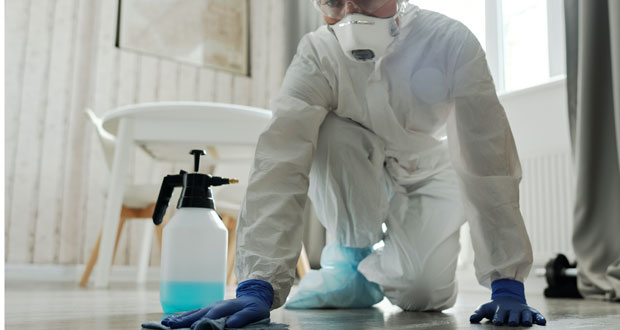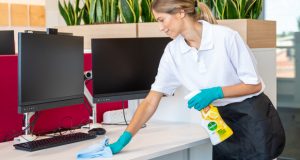By Christian Hendriksen, Co-founder & CEO, Rensair
In the battle against COVID, the biggest threat is transmission from inhaling airborne droplets, not from touching contaminated surfaces. Despite a campaign by the world’s leading aerosol scientists, atmospheric physicists and indoor-air researchers, the WHO was slow to react to that knowledge and lost vital ground.
In war, any delay in acting upon intelligence costs lives. Looking beyond COVID, that message needs to land. Indoor air quality must now become a central pillar of global public health policy and air purification a weapon in the arsenal of those who apply that policy.
On the BBC’s Andrew Marr Show on June 27, former UK Secretary of State for Health Jeremy Hunt was asked what he thought the incoming role holder should be focusing on. He cited three S’s: Social care system; Staffing; and Safety. On Safety he warned that antibiotics will stop working by the middle of the century and that bacterial resistance to antibiotics will mean more people dying from contracting microbial infections than from cancer.
It’s a threat to humanity that we simply cannot afford to ignore.
In September 2020, The Lancet claimed that “the rise in multidrug-resistant bacterial infections that are undetected, undiagnosed, and increasingly untreatable threatens the health of people” globally. It added that such infections claim at least 700,000 lives per year worldwide and are projected to cause 10 million deaths per year by 2050, costing the global economy US$100 trillion in lost productivity.
What we also cannot afford to ignore is that the bacterial infections that threaten us are not only transmitted through touch, but through the air. But yet again, deeply entrenched theories endure and there is a danger that we will be outflanked, even though we are expecting the onslaught.
An article in the Nursing Times sums up the airborne threat perfectly, stating that – in addition to physical contact and ingestion – infectious agents spread:
● Through droplets – small droplets containing the infectious agent are spread by coughing or sneezing and land directly on another person, or on an object from which the organism spreads through physical contact.
● By airborne infection – a person directly inhales the exhaled breath of an infected person; this is how tuberculosis spreads, for example.
● By airborne dissemination – the infectious agent is disseminated in the air – for example, during bed-making or dressing changes – and lands on a person or object from which it can spread via the physical contact route.
For combating COVID, the WHO now recommends air purifiers to supplement integrated ventilation systems while the SAGE committee, in its November 2020 report on air cleaning devices to combat SARS-CoV-2 transmission, recommends two technologies: fibrous filtration (HEPA) and germicidal UV (UVC), which together trap and destroy the virus.
A 2010 NCBI report on the role of particle size in aerosolised pathogen transmission reported individuals with infections producing particles between 0.05 and 500 microns. The efficacy of HEPA filtration has been proven at 100% with particle sizes of 0.05 microns and smaller, as well as above 5 microns. More importantly, at the 0.3 microns size, the most difficult to catch given their airborne behaviour, HEPA achieves a minimum performance of 99.97%. The report concluded that “expelled particles carrying pathogens do not exclusively disperse by airborne or droplet transmission but avail of both methods simultaneously and current dichotomous infection control precautions should be updated to include measures to contain both modes of aerosolised transmission.” Yet the health sector still concentrates on fomite transmission far more than aerosol, as if ground troops are the only way to engage the enemy.
Norovirus is a case in point. Often the cause of community-acquired acute gastroenteritis, it is common in healthcare settings, affecting both long-term care facilities and acute care hospitals. Whereas norovirus gastroenteritis is typically mild and resolves without medical attention, healthcare-associated infections often affect vulnerable populations, resulting in severe infections and disruption of healthcare services. With particles approximately 27-38 microns in diameter, which are easily trapped by HEPA filtration, it is known to spread in aerosol droplets that are created when infected children or adults vomit and/or have diarrhea. Despite that knowledge, preventative measures still focus on fomite cleaning and hand washing, even though, globally, norovirus results in a total of $4.2 billion in direct health system costs and $60.3 billion in societal costs per year.
Before people realised the importance of clean water, cholera and other waterborne pathogens claimed millions of lives around the globe every year. We can predict what will happen with drug-resistant bacteria and we know that it requires a multi-faceted defence system that includes clean air. The Centers for Disease Control and Prevention (CDC) now acknowledges antibiotic resistance as one of the biggest public health challenges of our time and notes that “fighting this threat is a public health priority that requires a collaborative global approach across sectors”. That means extending clean air from hospitals and medical practices to schools, offices and other shared spaces.
The threat from bacterial resistance fighters is very real. In the health sector and beyond, it demands that we meet force with force. It’s time to call upon the air force.
Rensair is a specialist in air purification, protecting and enhancing lives through clean air. Our technology was developed to meet the strict standards of Scandinavian hospitals and is independently validated by scientific research laboratories.





